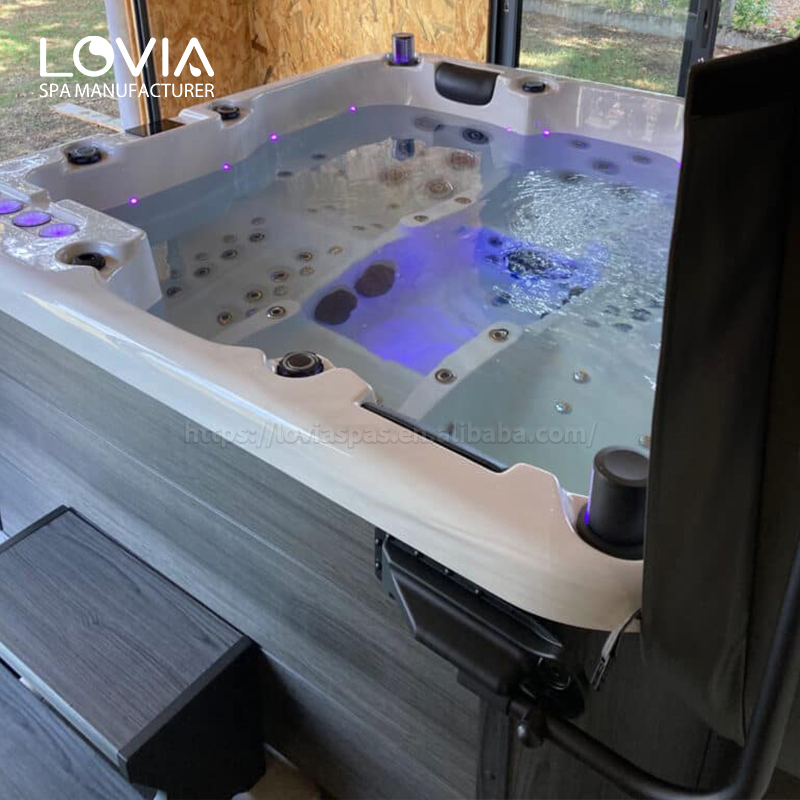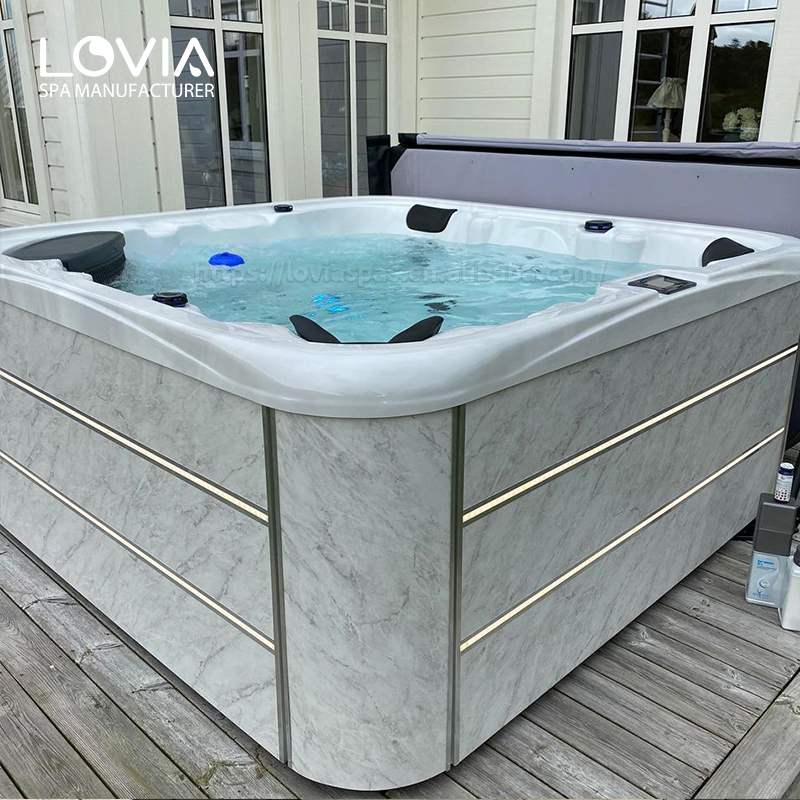
- Home
- >
- News
- >
- What is Hot Tub Rash?
- >
What is Hot Tub Rash?
2024-07-09 15:30Hot tubs have become increasingly popular in many homes and fitness facilities in recent years as a relaxing and stress-relieving family leisure facility. However, as their popularity has increased, so has the discussion about the possible health risks of hot tubs.
One issue of concern is "hot tub rash". This article will take a closer look at what hot tub rash is, and learn about its symptoms, causes, prevention measures, and how to deal with it.

What is Hot Tub Rash?
Hot Tub Rash, also known as opportunistic Pseudomonas folliculitis, is a skin disease caused by a bacterial infection. The main pathogen is a bacterium called Pseudomonas aeruginosa. This bacteria is commonly found in moist environments, including hot tubs, pools, and spas. Infection usually occurs after the skin comes into contact with contaminated water, especially when the water is hot and not properly disinfected.
What are the symptoms of hot tub rash?
The main symptoms of hot tub syndrome include: rash (small red rashes), pruritus and pain (intense itching), blisters and pustules, and general malaise (fever, fatigue, and general discomfort).
1. Rash: The most typical symptom is a small red rash that usually appears on the area where the skin came into contact with the hot tub. These rashes may appear within a few hours to a few days.
2. Itching and pain: The rash is usually accompanied by intense itching and sometimes pain. Scratching the rash may lead to further infection.
3. Blisters and pustules: In severe cases, the rash may develop into fluid-filled blisters or pustules.
4. Systemic symptoms: In a few cases, patients may experience systemic symptoms such as fever, fatigue, and general malaise.
Usually, these symptoms will subside on their own within 7-10 days, but in some cases, especially for people with weakened immune systems, the symptoms may be more severe and require medical intervention.

What causes hot tub syndrome?
The main cause of hot tub syndrome is opportunistic Pseudomonas infection. This bacteria grows and multiplies rapidly in warm, moist environments, especially when water temperatures are high and chlorine or other disinfectant levels are insufficient.
Contributors to opportunistic Pseudomonas: Improper water management, high water temperatures, frequent use, poor personal hygiene.
1. Improper water management: If the water quality of your hot tub is not well managed, bacteria can easily multiply. When there are insufficient levels of disinfectants such as chlorine or bromine in the water, bacteria can multiply rapidly.
2. High water temperatures: Bacteria grow faster in hot environments, especially in warm water temperatures of 35-40 degrees Celsius.
3. Frequent use: Frequent use of hot tubs can cause water quality to deteriorate, increasing the chances of bacterial growth.
4. Poor personal hygiene: If you do not shower before using a hot tub, dirt and bacteria from your body can contaminate the water quality, increasing the risk of infection.
How to prevent hot tub syndrome?
Regularly monitor the chlorine or bromine levels in your hot tub water and keep them within the recommended range. Keep the hot tub water temperature within the recommended range when using it, and avoid excessively high water temperatures. Finally, avoid soaking for long periods of time. Long soaks in a hot tub can make the skin more susceptible to bacterial infections. It is recommended that each session last no more than 15-20 minutes. By doing these things, you can reduce your risk of contracting hot tub syndrome.

How to deal with hot tub syndrome?
If you suspect you have hot tub syndrome, you should stop using the hot tub immediately to avoid further infection. At the same time, wash the infected skin area thoroughly with mild soap and water. For severe or persistent symptoms, you should seek medical attention. Your doctor may prescribe topical or oral antibiotics to treat the infection. Over-the-counter antipruritic medications, such as antihistamines, can be used to relieve itching and discomfort.
Conclusion
Although hot tub syndrome is common, it is completely avoidable with proper maintenance and preventive measures. Knowing its symptoms and causes and taking proactive preventive measures, such as keeping the water clean, controlling the water temperature, and paying attention to personal hygiene, can effectively reduce the risk of infection.
For those who have already been infected, it is crucial to recognize the symptoms and take appropriate treatment measures in a timely manner. Most people can recover quickly by stopping the hot tub, cleaning the skin, keeping it dry, and taking necessary medications.
